Radium-Age Telepaths
By:
April 12, 2010
Paving the way for Vulcans, Slan, Espers, Professor X and Babylon 5’s Lyta Alexander, SF writers of that genre’s Radium Age (1900-35) dared to imagine how we might react if telepaths were discovered among us. Call it: psi-fi.
In the late 19th century, scholars and scientists in Europe and America turned their collective attention not only to the mind, but to the paranormal. In 1882, the term “telepathy” was coined by a founder of the Society for Psychical Research; a boom in occult, proto-SF, and SF romances featuring various kinds of extra-sensory perceptions followed. Since 1892, as near as I can make out, at least one telepathy-related SF novel has been published every single year. (With one exception: 1910.) As with the SF superman, the telepath is an uncanny figure: alluring, impressive, inspiring, but also terrifying. We love and hate them. We want them out of our heads!
[A version of this item first appeared on Gawker’s sci-fi blog io9.com, on April 15, 2009.]
Here’s a rundown — in no particular order — of 10 of my favorite telepaths from Radium Age SF.
JOSH GLENN’S *BEST ADVENTURES* LISTS: BEST 250 ADVENTURES OF THE 20TH CENTURY | 100 BEST OUGHTS ADVENTURES | 100 BEST RADIUM AGE (PROTO-)SCI-FI ADVENTURES | 100 BEST TEENS ADVENTURES | 100 BEST TWENTIES ADVENTURES | 100 BEST THIRTIES ADVENTURES | 75 BEST GOLDEN AGE SCI-FI ADVENTURES | 100 BEST FORTIES ADVENTURES | 100 BEST FIFTIES ADVENTURES | 100 BEST SIXTIES ADVENTURES | 75 BEST NEW WAVE SCI FI ADVENTURES | 100 BEST SEVENTIES ADVENTURES | 100 BEST EIGHTIES ADVENTURES | 75 BEST DIAMOND AGE SCI-FI ADVENTURES | 100 BEST NINETIES ADVENTURES (in progress) | 1994 | 1995 | 1996 | 1997 | 1998 | 1999 | 2000 | 2001 | 2002 | 2003 | NOTES ON 21st-CENTURY ADVENTURES.
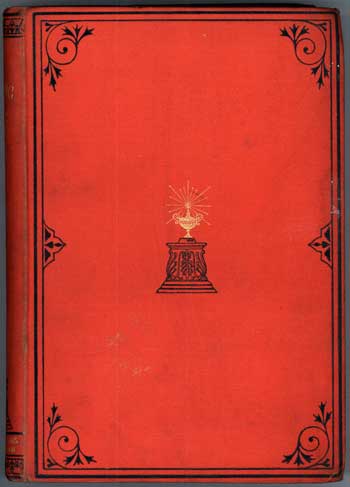
1) ZEE, in Edward Bulwer-Lytton’s The Coming Race (1871). The unnamed narrator finds his way into a too-perfect subterranean civilization peopled by the Vril-ya. Zee, a scholarly young female, takes him under her wing (literally, at times). Having taken refuge from a Deluge millennia earlier, the Vril-ya have evolved into a master race who can focus their wills to use “Vril,” a Force-like source of energy, for anything and everything from healing to destroying, from shaping matter to powering machines, and from mesmerization to telepathy. (“Zee asked me if, in my world, it was not known that all the faculties of the mind could be quickened to a degree unknown in the waking state, by trance or vision, in which the thoughts of one brain could be transmitted to another, and knowledge be thus rapidly interchanged.”) Though he discovers that the Vril-ya, whose advances have rendered them amoral, are running out of habitable space and plan to (re)claim the surface of the planet, the narrator is released. Fun facts: Bulwer-Lytton’s popular novel influenced J.R.R. Tolkien’s rings of power, Nazi mystics, Hollow Earth theorists, Tesla’s research into remote control, and England’s “fluid beef” product Bovril (Bovine + Vril).
READ IT | READ IT | BUY IT
2) STELLA, in George Allan England’s The Empire in the Air (serialized 1914). Paul Kramer, a daredevil flyer is abducted — or, rather, sublimated — into the fourth dimension while attempting to set a new altitude record over Boston. His fiancee, Stella, is highly mediumistic, so Kramer is able to warn her of an attack by beings from “beyond the universe.” In search of life energy, these globs of solidified light “at absolute zero” plan to disintegrate the Earth. How to stop them? Communicating via Stella, Kramer instructs fellow aviators to fly up to the altitude where he disappeared and join him in the fourth dimension. They do so, and — by focusing their collective will power — are able to fire the atmospheric dust left in the Earth’s atmosphere, via the eruption of Krakatoa. This destroys the invading aliens, and Earth is saved. Fun fact: England is the author of three other excellent early SF novels, The Air Trust, Darkness and Dawn, and The Flying Legion.
BUY IT
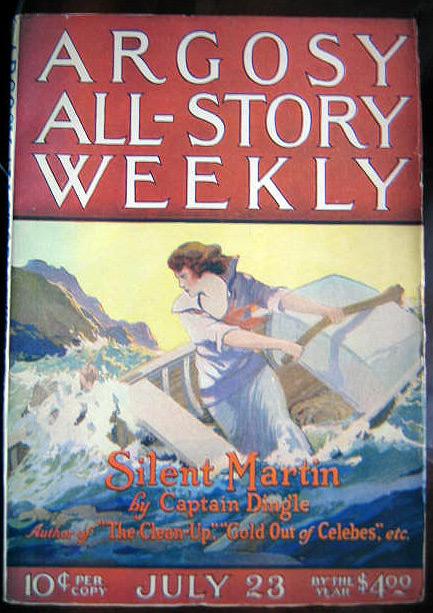
3) DR. KINNEY & CO., in Homer Eon Flint’s The Devolutionist (novella, serialized 1921). Flint was one the outstanding pre-Amazing Stories pulp SF writers. His “Dr. Kinney” series (The Lord Of Death, The Queen Of Life, The Devolutionist, and “The Emancipatrix“) explore theories about, for example, the survival of the fittest and benign dictatorships… on other planets. Having learned how to visit other worlds telepathically, without leaving Earth — i.e., by means of Venusian technology — Kinney and his companions enter the minds and share the sensations of the inhabitants of a human-like civilization on a double planet. One planet (Hafen) is the abode of capitalists; the other (Holl) of workers. Not content merely to study the goings-on, Kinney & co. help the workers’ revolutionary party stop the Hafenites from invading the nearby planet Alma, which is inhabited by “‘cooperative democrats’; that is, they do not compete with each other for a living, but work together in all things, in complete equality.” Then a Hafenite WMD separates the twin planets. Fun facts: Flint reportedly died as a result of an involvement in a bank robbery attempt. In 1965, Ace published The Devolutionist, and The Emancipatrix together, under a single title; best title ever?
READ IT | READ IT | BUY IT
4) ?, in Muriel Jaeger’s The Man with Six Senses (1927). Muriel Jaeger’s Radium Age SF novels sound fascinating, and terrific. She was at Oxford with one of my favorite mystery writers, Dorothy L. Sayers, which makes me imagine that her style is equally erudite yet funny. Her first novel, The Question Mark (1926), has been described as a “Libertarian socialist utopia” and a “scientific romance.” I also like the sound of Jaeger’s SF novels Sisyphyus, or the Limits of Psychology (1929), Hermes Speaks (1933), and Retreat from Armageddon (1936). But they’re all deeply out of print, and expensive; so I’ve never read any of ’em. Still, I’m including The Man with Six Senses on this Top Ten list because SF scholars call it one of the first attempts at thoughtfully, even painstakingly extrapolating what it might mean to have extra-sensory perceptions… leading to the conclusion that it might be more of a burden than a blessing. Alas, these scholars don’t mention the young male protagonist’s name, so I can’t provide it here. Fun fact: Jaeger’s SF novels were published by Leonard and Virginia Woolf’s Hogarth Press.
GET IT FROM A LIBRARY | MORE JAEGER BOOKS
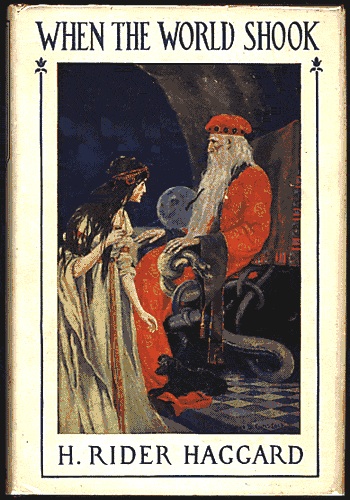
5) ORO and YVA, in H. Rider Haggard’s When the World Shook: Being an Account of the Great Adventure of Bastin, Bickley, and Arbuthnot (serialized 1918-19). A fantasy novel of the discovery and awakening of two Atlanteans who have been in a state of suspended animation for 250,000 years. In one of the few SF tales by the author of King Solomon’s Mines and She, Humphrey Arbuthnot and companions discover the last two survivors of an Atlantis-like advanced civilization; they have been in a state of suspended animation for 250,000 years. Now awoken, the scientist Oro — who’d been the civilization’s priest-king — uses his paranormal mental abilities (clairvoyance, teleportation, mind control) to study WWI-era Europe and its colonies. Dismayed by the miserable and degenerate state of affairs he sees, Oro decides to destroy humankind. His daughter Yva (Eve) sacrifices herself to prevent him from doing so.
READ IT | READ IT | BUY IT
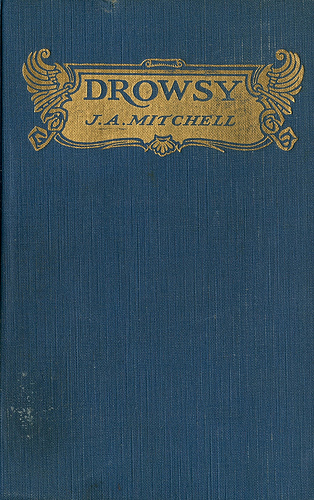
6) DROWSY, in J.A. Mitchell’s Drowsy (1917). Cyrus Alton, a telepath nicknamed Drowsy because of his drooping eyelids, grows up to attend MIT and become a brilliant scientist. He invents a spaceship equipped with an antigravity mechanism, and flies to the moon, returning with a fantastic diamond… and then, impelled by a psychic bond with a childhood sweetheart, rescues her before she joins a convent. Of greater interest, though, is Mitchell’s account of Drowsy’s childhood. Is he the first of a new species: homo superior? Like the title character of Beresford’s Hampdenshire Wonder, the boy’s evolved worldview offends his narrow-minded elders. Especially when, for example, he cuts his favorite illustrations out of a Bible; or insists on the morality of untruths; or demands to know why “teacher doesn’t tell us things worth knowing.” Like Daniel Clowes’s Enid Coleslaw, that is to say, Drowsy is a cranky middle-aged freethinker in a child’s body. Fun facts: The author, a Harvard dropout and idler, founded the original LIFE Magazine, later purchased by Henry Luce, in 1883. Also: With Horace Greeley, Mitchell founded the Fresh Air Fund.
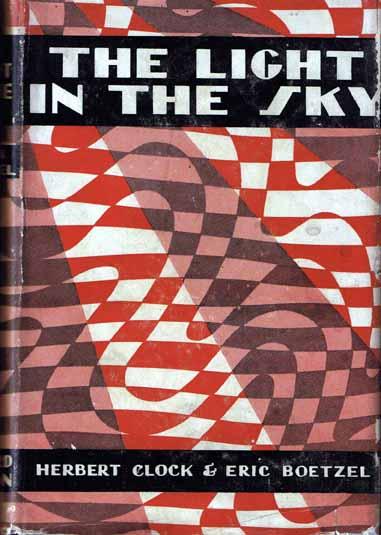
7) TIZOC, in Herbert Clock and Eric Boetzel’s Light in the Sky (1929). An unnamed narrator is kidnapped, and wakes up in an Aztlan, an underground civilization where the Aztecs — he discovers — have been living ever since they fled from Cortez in the time of Montezuma’s defeat. In the intervening centuries, they’ve invented airships, solar power, sleep rays, and rejuvenation/immortality, not to mention an atomic-energy-style weapon called the Eighth Color. Aztlan’s leader is Tizoc, Montezuma’s brother, a telepath who has mastered the electromagnetic spectrum. Discovering that he’s a descendant of Cortez whose ritual sacrifice will mark the re-emergence of the Aztecs into the surface world, which they plan to conquer, the narrator plans to escape. (Up to this point, the novel closely rips off The Coming Race.) Tizoc reads his mind and reveals something that even his own son doesn’t know: Instead of conquering the surface world, he plans to benefit it with Aztec science. Then Tizoc is killed by his son, and Aztlan is destroyed. Fun fact: Everett F. Bleiler says of this novel that “One has the impression that the authors sought to write the wildest possible story.”
READ IT |
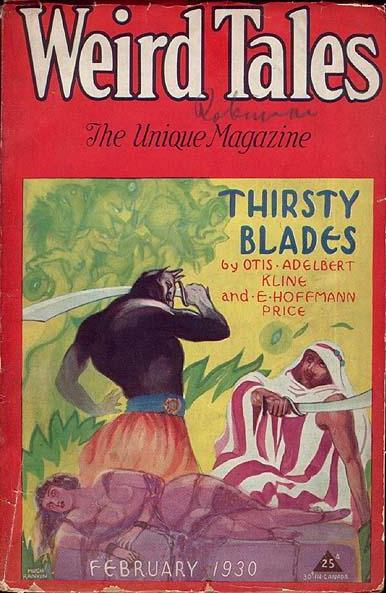
8) REZ, in Paul Ernst’s The Black Monarch (serialized Feb.-June 1930). Yet another Coming Race-style yarn. In 1992, Dr. Sanderson, foster-son of an inventor who’s created a machine that can respond to thought waves, detects the presence of an immensely evil being in Algeria. He and an adventurer, Neil Emory, discover a subterranean civilization beneath that country; it is ruled by Rez, an immortal ancient Egyptian whose brain is so enlarged that he’s replaced his own skull with a metal contraption. Rez has highly developed paranormal powers — he converses telepathically, and, with the aid of a huge diamond crystal, controls the wills of his small, robot-like subjects. From his underground lair he’s manipulating the world into a war that will smash civilization as we know it. Despite being overpowered and tortured by Rez, Sanderson and Emory must find a way to defeat him. Fun facts: From 1939-42, under the name Kenneth Robeson, Ernst would write the original 24 Avenger stories for the magazine of that title. Pulp expert Don Hutchison has called Ernst “a prolific manufacturer of potboilers-made-to-order.”
9) HARRY MAXWELL, in Lilith Lorraine’s The Brain of the Planet (1929). In 1935 Harry Maxwell, a radical and brilliant young scientist, becomes convinced that telepathy is merely a technical question, a matter of positive (sending) and negative (receiving) minds. He and some friends build a wireless transmission station in Mexico… but instead of broadcasting radio waves, they broadcast thought waves that derive their energy from the collective unconscious. Their message? Altruism. Left- and right-wing fanatics everywhere drop dead upon impact; everyone else responds positively. Before you know it, a united world state governs a populace in which everyone is socially, economically, and sexually fulfilled. Fun fact: Lorraine, whose real name was Mary M. Wright, was a poet, Texas crime reporter, and early feminist utopian; she ended up with an FBI file because of her socialist views. She chose the pen name Lilith in honor of a fellow “troublemaker,” i.e., the Biblical Adam’s first wife.
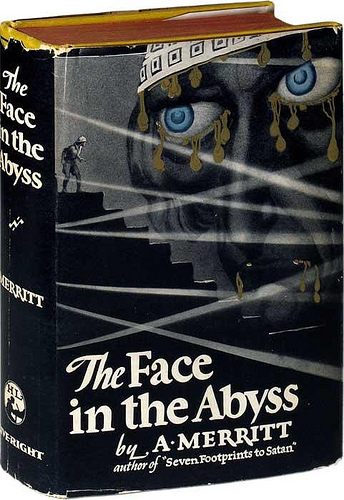
10) THE SNAKE MOTHER, in A. Merritt’s The Face in the Abyss (1931). This semi-occult SF novel, which combines “The Face in the Abyss” (serialized Sept. 1923) and its sequel, “The Snake Mother” (serialized Oct.-Dec. 1930), is set in the Peruvian Andes. Treasure-hunter Nicholas Graydon rescues Suarra, handmaiden to Adana, the Snake Mother of Yu-Atlanchi, from his own companions. Adana is the last of a race of superintelligent serpent people whose servants, the Old Race, are immortal. Although possessed of fragments of their former superior science, they are now obsessed with sex, hunting mutants with dinosaurs, and dream machines. Adana, who possesses spectacular paranormal abilities, is humankind’s only defense against Nimir, a Sauron- or Voldemort-like mage who’d conquer the world if he could inhabit a physical body. He wants Graydon’s, but a band of Old Race outlaws and mutated spiders thwart him. Fun facts: Merritt was once considered the greatest SF writer of modern times; he had a magazine – A. Merritt’s Fantasy Magazine – named after him. E.F. Bleiler praises his “sweeping ideas, high emotion, and perpetual suggestions of deeper phenomena beneath the surface of events.”
BUY IT | READ IT
ALSO OF INTEREST
NINETEENTH CENTURY (1804-1903)
* Edward Bellamy, “To Whom This May Come” (serialized Feb. 1888)
* Francis W. Doughty, Mirrikhor, A Woman from Mars: A Tale of Occult Adventure (1892)
* William Harben, “In the Year Ten Thousand” (serialized Nov. 1892)
* W.S. Lach-Szyrma, Under Other Conditions: A Tale (1892)
* Byron A. Brooks, Earth Revisited (1893)
* William Livingston Alden, “A Modern Vampire” (serialized March 1894)
* George Du Maurier, Trilby (1894: fantasy – first appearance of Svengali)
* John Strange Winter, A Seventh Child (1894: occult)
* Gustavus W. Pope, Romances of the Planets, No. 1. Journey to Mars (1894)
* Theron Clark Crawford, “The Disappearance Syndicate” (1894)
* Tremlett Carter, The People of the Moon (1895)
* A. Garland Mears, Mercia, The Astronomer Royal (1895)
* M. Auberre Hovorre, The Milltillionaire (c. 1895)
* Robert Cromie, The Crack of Doom (1895)
* Arthur Conan Doyle, The Parasite (1895: fantasy)
* James Buckham, “A Telepathic Wooing” (1896)
* Thomas F. Anderson, “A Mental Mischance” (serialized Sept. 1896)
* George Du Maurier, The Martian (1897)
* Weatherby Chesney, “The Witch” (1898)
* Henry Athey, With Gyves of Gold: A Novel (1898)
* Charles L. McKesson, Under Pike’s Peak: Or, Mahatma, Child of the Fire Father (1898)
* Anne Adolph, Arqtiq: A Story of the Marvels of the North Pole (1899)
* Henry S. Drayton, In Oudemon: Reminiscences of an Unknown People by an Occasional Traveler (1900)
* Charles Cole, Visitors from Mars (1901)
* Harry E. Rice, Eve and the Evangelist: A Romance of A.D. 2108 (1901)
* Barry Pain, The Great White Way (1901)
* Eden Philpotts, “A Story Without an End” (serialized 1901)
* J. George Frederick, “The Dupe of a Realist” (serialized March 1902)
* Charles Godfrey Leland, Flaxius: Leaves from the Life of an Immortal (1902)
* Mabel Ernestine Abbott, “Those Fatal Filaments” (1903)
THE NINETEEN-OUGHTS (1904-13)
* W.G. Worfel (as The Baron), Munchausen XX (1904)
* Gabriel de Tarde, Underground Man (1905, in translation)
* Rev. William Shuler Harris, Life in a Thousand Worlds (1905)
* John F. Armour, Edenindia: A Tale of Adventure (1905)
* Edwin Lester Arnold, Lieut. Gullivar Jones: His Vacation (1905)
* Don Mark Lemon, “The Essence of Advertising” (serialized August 1906)
* Louis Tracy, Karl Grier: The Strange Story of a Man with a Sixth Sense (1906: occult)
* John Mastin, The Immortal Light (1907)
* Edgar Earl Christopher, The Invisibles (1908)
* Frank Hatfield, The Realm of Light (1908)
* John Mastin, Through the Sun in an Airship (1909)
* James Rock, Thro’ Space (1909)
* Herman K. Viele, On the Lightship (1909)
* Garrett P. Serviss, A Columbus of Space (serialized 1909, as novel 1911)
* Ronald Legge, The Hawk: A Story of Aerial War (1909)
* J.D. Beresford, The Hampdenshire Wonder (1911)
* Gustave Frederick Mertins, A Watcher of the Skies (1911)
* William Hope Hodgson, The Night Land (1912)
* Edgar Rice Burroughs, A Princess of Mars (serialized 1912; as novel 1917)
* Morgan Robertson, “Absolute Zero” (serialized, 1913)
THE TEENS (1914-23)
* George Allan England, The Empire in the Air (1914)
* Herbert Gubbins, The Elixir of Life, or 2905 AD (1914)
* Stephen McKenna, The Sixth Sense (1915)
* Garrett P. Serviss, The Moon Maiden (1915)
* Hugo Gernsback, “Martian Amusements” (serialized June 1916)
* J.A. Mitchell, Drowsy (1917)
* Clifford Smyth, The Gilded Man: A Romance of the Andes (1918)
* H. Rider Haggard, When the World Shook: Being an Account of the Great Adventure of Bastin, Bickley, and Arbuthnot (1919)
* Leslie Burton Blades, “Fruits of the Forbidden Tree” (serialized Nov. 1919)
* Homer Eon Flint, The Queen of Life (novella, 1919)
* Denby Brixton, The Unknown Revolution (1919: novella)
* T.S. Stribling, The Green Splotches (novella, 1920)
* Homer Eon Flint, The Devolutionist (novella, 1921)
* J.D. Beresford, “Young Strickland’s Career” (1921)
* Norbert Jacques, Dr Mabuse, der Spieler (1922: horror)
* Gilbert Collins, The Valley of Eyes Unseen (1923)
* H.G. Wells, Men Like Gods (1923)
* Ganpat (Martin Louis Gompertz), Harilek: A Tale of Modern Central Asia (1923)
* Ivan Narodny, The Skygirl – A Mimodrama – In Three Acts on a Star (performed 1923, as novel 1925)
THE TWENTIES (1924-33)
* Norman Elwood Hammerstrom & R.F. Searight, “The Brain in the Jar” (1924)
* Rena Oldfield Pettersen, Venus (1924)
* Leslie Beresford, The Venus Girl (1925)
* Lady Anne Bonny, Wings of Power (novella, 1925)
* S. Fowler Wright, The Amphibians (1925)
* J.C. Smith, Thus Far (1925)
* Elwood F. Pierce, “The Dream of Death” (serialized July 1925)
* Robert Spencer Carr, “The Composite Brain” (serialized March 1925)
* T.S. Stribling, Christ in Chicago (1926)
* Julian Huxley, The Tissue-Culture King (1926)
* J.P. Marshall, The World in the Balance (1927)
* Arthur Conan Doyle, The Maracot Deep (serialized 1927-28, as novella 1929)
* Muriel Jaeger, The Man with Six Senses (1927)
* Alfred Ollivant, To-Morrow: A Romance of the Future (1927)
* Wilford Allen, “The Arctic Death” (serialized June 1927)
* Maurice Lincoln, Nothing Ever Happens (1927)
* Ray Cummings, Beyond the Stars (serialized 1928; as novel 1963)
* Bertram Russell, The Bat-Men of Thorium (novella, 1928)
* Herbert Clock and Eric Boetzel, The Light in the Sky (1929)
* Otis Adelbert Kline, The Planet of Peril (1929)
* Roy Rockwood, By Air Express to Venus (1929)
* George B. Tuttle, The Roc Raid (1929)
* Hand P. Dreyer, The Secret of the Sphinx (1929)
* Ray Cummings, The Sea Girl (serialized 1929; as novel 1930)
* Paul Ernst, The Black Monarch (1930)
* Otis Adelbert Kline, The Prince of Peril (1930)
* S. Fowler Wright, “P.N. 40” (1930)
* Edmond Hamilton, “The Man Who Saw the Future” (1930)
* Olaf Stapledon, Last and First Men (1930)
* Talbot Mundy, Jimgrim (serialized 1930-31)
* A. Merritt, The Face in the Abyss (1931)
* Charles Fort, Wild Talents (1932: nonfiction)
* Olaf Stapledon, Last Men in London (1932)
* Pansy E. Black, The Man from the Meteor (1932)
* Edmond Hamilton, “The Man with X-Ray Eyes” (1933)
EARLY GOLDEN AGE/LATE RADIUM AGE
* J.B. Rhine. Extra-Sensory Perception (1934, nonfiction influenced Campbell)
* André Maurois, The Thought-Reading Machine (1937; 1938 in English)
MORE RADIUM AGE SCI FI ON HILOBROW: HiLoBooks homepage! | What is Radium Age science fiction? |Radium Age 100: 100 Best Science Fiction Novels from 1904–33 | Radium Age Supermen | Radium Age Robots | Radium Age Apocalypses | Radium Age Telepaths | Radium Age Eco-Catastrophes | Radium Age Cover Art (1) | SF’s Best Year Ever: 1912 | Radium Age Science Fiction Poetry | Enter Highbrowism | Bathybius! Primordial ooze in Radium Age sf | War and Peace Games (H.G. Wells’s training manuals for supermen) | Radium Age: Context series | J.D. Beresford | Algernon Blackwood | Edgar Rice Burroughs | Karel Čapek | Buster Crabbe | August Derleth | Arthur Conan Doyle | Hugo Gernsback | Charlotte Perkins Gilman | Cicely Hamilton | Hermann Hesse | William Hope Hodgson | Aldous Huxley | Inez Haynes Irwin | Alfred Jarry | Jack Kirby (Radium Age sf’s influence on) | Murray Leinster | Gustave Le Rouge | Gaston Leroux | David Lindsay | Jack London | H.P. Lovecraft | A. Merritt | Maureen O’Sullivan | Sax Rohmer | Paul Scheerbart | Upton Sinclair | Clark Ashton Smith | E.E. “Doc” Smith | Olaf Stapledon | John Taine | H.G. Wells | Jack Williamson | Stanisław Ignacy Witkiewicz | S. Fowler Wright | Philip Gordon Wylie | Yevgeny Zamyatin
READ GORGEOUS PAPERBACKS: HiLoBooks has reissued the following 10 obscure but amazing Radium Age science fiction novels in beautiful print editions: Jack London’s The Scarlet Plague, Rudyard Kipling’s With the Night Mail (and “As Easy as A.B.C.”), Arthur Conan Doyle’s The Poison Belt, H. Rider Haggard’s When the World Shook, Edward Shanks’ The People of the Ruins, William Hope Hodgson’s The Night Land, J.D. Beresford’s Goslings, E.V. Odle’s The Clockwork Man, Cicely Hamilton’s Theodore Savage, and Muriel Jaeger’s The Man with Six Senses. For more information, visit the HiLoBooks homepage.
SERIALIZED BY HILOBOOKS: Jack London’s The Scarlet Plague | Rudyard Kipling’s With the Night Mail (and “As Easy as A.B.C.”) | Arthur Conan Doyle’s The Poison Belt | H. Rider Haggard’s When the World Shook | Edward Shanks’ The People of the Ruins | William Hope Hodgson’s The Night Land | J.D. Beresford’s Goslings | E.V. Odle’s The Clockwork Man | Cicely Hamilton’s Theodore Savage | Muriel Jaeger’s The Man With Six Senses | Jack London’s “The Red One” | Philip Francis Nowlan’s Armageddon 2419 A.D. | Homer Eon Flint’s The Devolutionist | W.E.B. DuBois’s “The Comet” | Edgar Rice Burroughs’s The Moon Men | Charlotte Perkins Gilman’s Herland | Sax Rohmer’s “The Zayat Kiss” | Eimar O’Duffy’s King Goshawk and the Birds | Frances Hodgson Burnett’s The Lost Prince | Morley Roberts’s The Fugitives | Helen MacInnes’s The Unconquerable | Geoffrey Household’s Watcher in the Shadows | William Haggard’s The High Wire | Hammond Innes’s Air Bridge | James Branch Cabell’s Jurgen | John Buchan’s “No Man’s Land” | John Russell’s “The Fourth Man” | E.M. Forster’s “The Machine Stops” | John Buchan’s Huntingtower | Arthur Conan Doyle’s When the World Screamed | Victor Bridges’ A Rogue By Compulsion | Jack London’s The Iron Heel | H. De Vere Stacpoole’s The Man Who Lost Himself | P.G. Wodehouse’s Leave It to Psmith | Richard Connell’s “The Most Dangerous Game” | Houdini and Lovecraft’s “Imprisoned with the Pharaohs” | Arthur Conan Doyle’s “The Sussex Vampire.”
READ MORE essays by Joshua Glenn, originally published in: THE BAFFLER | BOSTON GLOBE IDEAS | BRAINIAC | CABINET | FEED | HERMENAUT | HILOBROW | HILOBROW: GENERATIONS | HILOBROW: RADIUM AGE SCIENCE FICTION | HILOBROW: SHOCKING BLOCKING | THE IDLER | IO9 | N+1 | NEW YORK TIMES BOOK REVIEW | SEMIONAUT | SLATE
